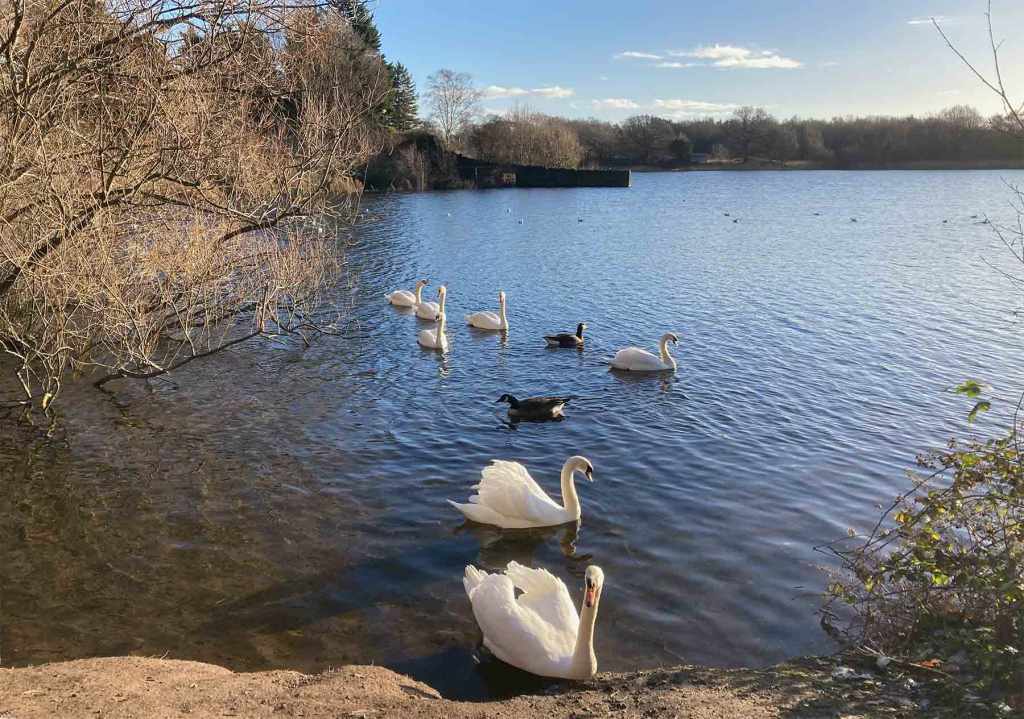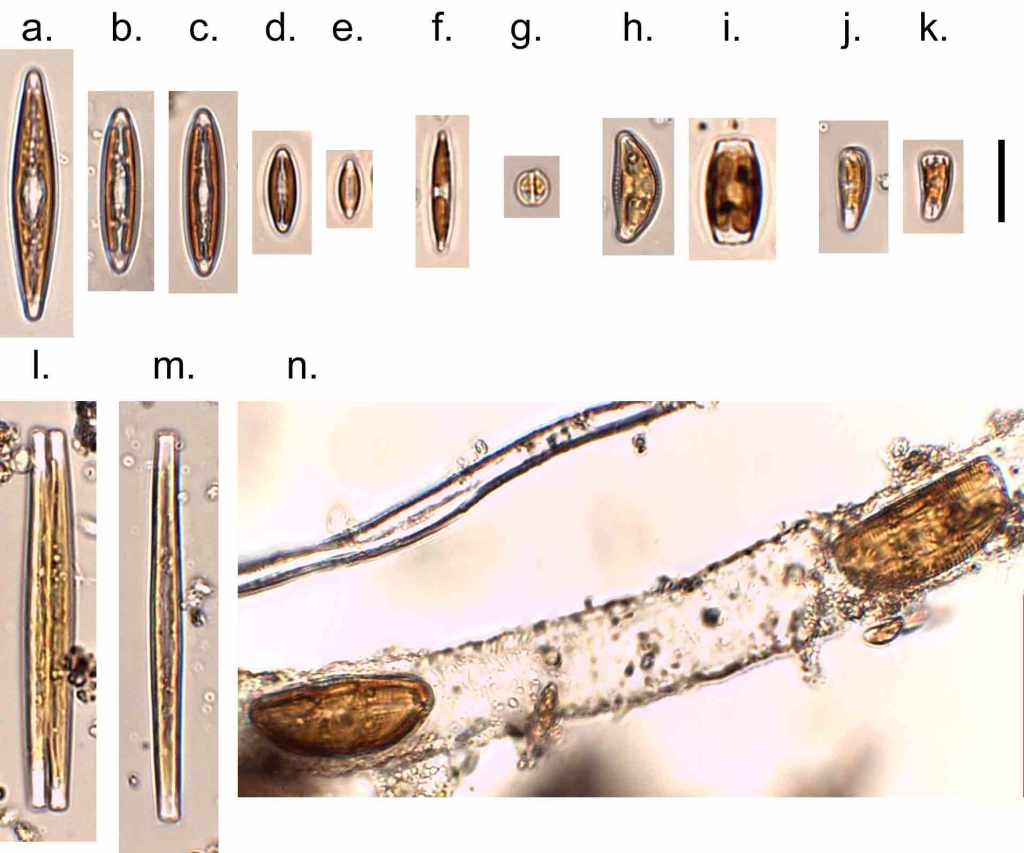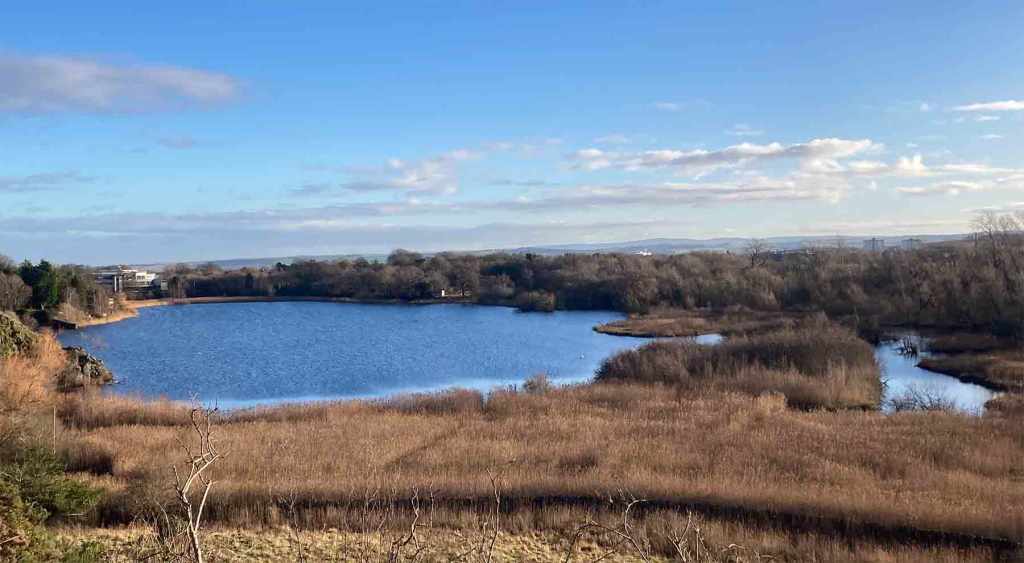There was a brief break in the dreary, wet weather that has beset Britain this winter last weekend, and I was fortunate enough to be well-placed to take advantage. I was in Edinburgh, walking from Waverley station, past St Leonard’s police station (made famous by Ian Rankin’s Rebus novels) and then following the perimeter of Holyrood Park until an open expanse of water appeared before me. The view at the top of the post does not look like I was in the centre of a capital city, but that rocky expanse rising from the side of the loch is Arthur’s Seat, the other side of which lies the Royal Mile and the Scottish Parliament.
Why Duddingston Loch? I wrote last year about a trip to Borrowdale, to link a landscape painting by Turner to the microscopic landscapes that existed in the stream he depicted. Duddingston Loch is also the location for a famous painting, Henry Raeburn’s picture popularly known as the Skating Minister (c. 1795). This depicts a black-clad clergyman skating on the frozen loch with the slope of Arthur’s Seat just visible in the misty backdrop. A visit in January seemed appropriate, even if the loch was not frozen.
Travelling to Edinburgh by train limited the amount of equipment I could bring and this created a problem as the loch did not provide any suitable surfaces for me to sample within an arm’s length of the shore. A further problem then presented itself, as a group of curious swans came across to investigate my presence. I sat on a bench and reviewed options until they got bored and swam away then, resigned to my fate, took off my boots and socks, rolled my trousers to the knee and waded into the water. The lake bed in this area was silty but firm, with a few protruding pebbles and one or two small cobbles for me to collect into my tray. The water was, I measured, about 5.5 degrees Celsius and I emerged a couple of minutes later with a renewed admiration for cold water swimmers. I brushed the silty diatom-rich film off the stones with my toothbrush whilst I sat on a bench letting the sun dry my feet and chatting to passers-by who were curious to know what I was doing.
A group of swans investigating my presence beside Duddingston Loch in January 2024. The picture at the top shows a view looking west across the loch.
That was as much as I was able to do on this first visit. I could see some promising reedbeds on the far side of the loch, but I would need to get a key from the Scottish Wildlife Trust to visit there. I put my socks and boots back on, then followed an old railway line along the southern edge back to St Leonards and then to the city centre where I went into the Scottish National Gallery to look at Raeburn’s painting and browse around some other Scottish landscapes before heading back to the station.
I looked at the sample under my microscope the following day, and found a dozen or so species very easily. Most suggest that the loch is nutrient rich, which is not a big surprise given its urban surroundings. There were at least three species of Navicula gliding around, as well as Nitzschia dissipata. There were also a couple of species of Encyonema, one free-living and the other inside a tube, plus some cells of Fragilaria, Amphora pediculus and Rhoicosphenia abbreviata. Alongside these diatoms I found filaments of the green algae Mougeotia and Oedogonium plus a narrow Oscillatoria. I was rather relieved, I have to say, to find so many algae, as my first impression of the rather silty sample was not encouraging and I thought that my excursion into the freezing waters of the loch may have been in vain. There was, however, no obvious focal point for a picture, so that will have to wait for another visit. As I said earlier, those reedbeds on the far side look more promising, though I suspect I am going to annoy some birdwatchers if I spend too long splashing around close to their hide.
Some diatoms from Duddingston Loch, January 2024: a. – e. Navicula spp (likely N. radiosa, N. tripunctata and N. gregaria); f. Nitzschia dissipata; g. Amphora pediculus; h., i.:Encyonema cf. silesiacum; j. k., Rhoicosphenia abbreviata; l., m. Fragilaria cf. tenera; n. Encyonema leibleinii. Scale bar: 20 micrometres (= 1/50th of a millimetre).
Some other highlights from this week:
Wrote this whilst listening to: Art School Girlfriend
Currently reading: The House of Doors by Tan Twan Eng, which cleverly weaves real-life characters and events into a novel set in Malaysia in the first half of the 20th century.
Cultural highlight: Rye Lane, 2023 film set in Brixham and Peckham in south London which had good reviews when it came out but we were unable to see in the cinema.
Culinary highlight: enough fruit puree harvested from our allotment accumulates in our freezer that we are able to enjoy the pleasure of a summer pudding in the middle of the winter.
Duddingston Loch looking east




